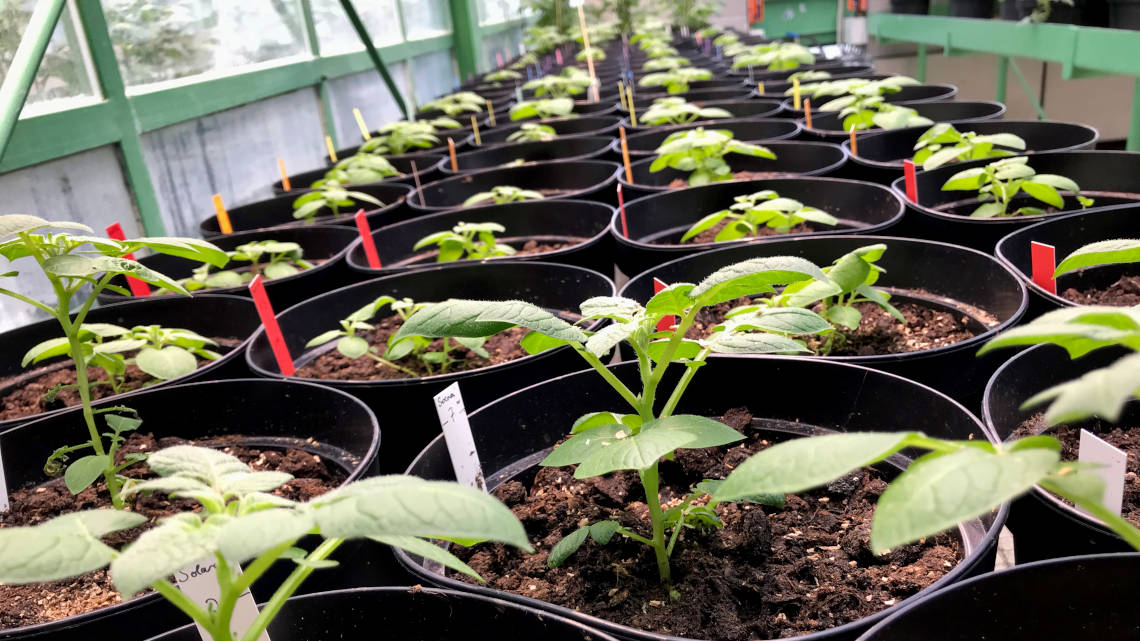Turning off the potato's thermostat
Using a simple genetic trick, biochemists at the University of Erlangen-Nuremberg have induced potatoes to form tubers even at high temperatures.

Balmy summer nights and hot days? What vacationers love, potatoe farmers fear. At 29 degrees Celsius during the day or 27 degrees Celsius at night, potato yields plummet. The nightshade plant reacts sensitively to heat and stops tuber formation if temperatures are too high. The highest yields can be gained at 21 degrees Celsius during the day and 18 degrees Celsius at night. In times of climate change, this could become a problem. But now, scientists have discovered the potato's thermostat and managed to switch it off.
Protein SP6A activates tuber formation
"Up to now, the mechanism that prevents tuberisation at high temperatures was not known," explains Uwe Sonnewald, biochemist at the University of Erlangen-Nuremberg. All that was known was that the potato forms a protein called SELF-PRUNING 6A (SP6A) at the right temperature and day length. This activates the tuber formation in the plant, a preparation for future cold spells. If the protein is not active, the potato focuses on above-ground growth.
A short RNA regulates SP6A
Sonnewald's team has now identified a short ribonucleic acid (RNA) that serves as a thermostat for the potato. In the specialist journal "Current Biology", biochemists report on temperature-dependent RNA from about 19 nucleotides: The molecule only becomes active at elevated temperatures, but then blocks the SP6A protein - and thus the growth of tubers. When the researchers switched off the small RNA, the plant continued to form tubers of the usual quality even at temperatures above 29 degrees Celsius.
Verifications under field conditions still pending
"Our results offer us the means of still being able to grow potatoes in future at increasing temperatures," says Sonnewald. Since the previous experiments took place in the laboratory, the team now wants to check whether the method can also be successfully applied under real field conditions.
bl/um


